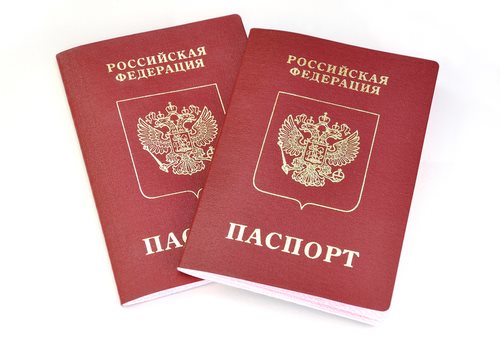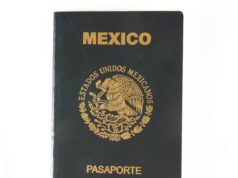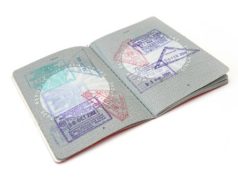
Introduction
Russia, the world’s largest country in terms of land mass has been a site of immense diversity and challenges throughout history. It provides a home for hundreds of ethnicities with their diverse languages, customs, and traditions. Many people migrate from Russia for various reasons such as seeking better living standards, economic opportunities, heightened political freedom, and religious freedom. The Russian immigration trend is not a new concept as Russia has a long history of emigration and immigration. In this article, we will discuss the history of Russian immigration in the United States and how it has shaped present-day America, as well as the impact of the recent Russian immigration in the United States.
History of Russian Immigration in the United States
The Russian Empire spanned a vast territory, including not only modern-day Russia but also large parts of Eastern Europe and Asia. Many people emigrated from the Russian Empire to America in the late 1800s and early 1900s. Russians who migrated were primarily Jews or those who belonged to religious sects such as the Molokans that faced persecution in the Russian Empire. The migration was driven by a desire to escape religious persecution, a search for economic opportunities, and political freedom.
Immigrants from Russia arrived in successive waves to America, each wave corresponding to a specific political or economic situation in the Russian Empire. The first wave consisted of Russians who arrived in the United States between the 1880s to the early 1920s. They primarily settled in the northeastern United States, mainly to cities such as New York, Boston, and Philadelphia. Many of these early immigrants formed close-knit communities and maintained their religious and cultural traditions.
The second wave of Russian immigrants came to America in the early 1920s. These immigrants were known as White Russians and were primarily composed of intellectuals, aristocrats, and royalty who had fled the Russian Revolution of 1917. These immigrants were motivated by fear of persecution from the Bolsheviks who had seized power in Russia. After World War II, a third wave of Russian immigrants arrived in the United States, including many ethnic Russians who were persecuted by the Soviet regime and political refugees.
Impact of Russian Immigration on American Society
The Russian immigrants who arrived in the United States over the past century have brought their unique cultures, traditions, and experiences, which have influenced American society. Russian immigrants have contributed to American society in areas such as education, science, and culture. Today, many Russian immigrants work in various fields, including medicine, law, engineering, and computer science. The United States also has one of the largest Russian-speaking communities globally, which includes not only immigrants but also descendants of the immigrants who arrived during the early periods of Russian immigration.
The experiences of Russian immigrants in America have been diverse, with many encountering difficulties while trying to integrate into American society. One of the greatest challenges that Russian immigrants faced was learning English and assimilating into American culture. Another notable challenge was finding employment in the United States, especially for immigrants who did not have formal education or whose qualifications were not recognized in America.
The Impact of Recent Russian Immigration in the United States
Russian immigration to the United States has continued over the years and has remained significant even in recent times. The recent wave of Russian immigration began with the fall of the Soviet Union, leading to increased political and economic instability in Russia. An estimated 3.2 million Russian immigrants live in the United States today, according to the Migration Policy Institute.
One of the most significant impacts of recent Russian immigration has been on the economy. Many Russian immigrants have established successful businesses, created jobs, and contributed significantly to the economy of the United States. Many Russian immigrants have also invested in real estate, leading to increased property value in some areas. In addition, Russian immigrants have also contributed to the innovation and development of the high-tech industry in the United States.
Russian immigrants have also had a significant impact on American politics. Some Russian immigrants came to the United States to escape persecution from the Soviet regime, and they have played a vital role in shaping U.S. politics. Today, Russian immigrants continue to play a significant role in U.S. politics, with many participating in local and state-level politics.
Conclusion
The history of Russian immigration in the United States is rich and diverse, with each wave of immigration corresponding to a specific historical or political situation in Russia. The experiences of Russian immigrants in the United States have been diverse, and many have contributed significantly to American society in areas such as education, science, and culture. The impact of Russian immigration on the United States has been significant, with many Russian immigrants making significant contributions to the economy, politics, and culture. As the United States faces challenges in the current global environment, Russian immigrants will continue to play an important role in shaping the future of America.
Russian Immigrants have traditionally been categorized into different waves of movements. These movements are marked with a time period of war or revolution. The first wave centers around the years of 1917 to 1922. The second wave of Russian immigrants is from 1970s to the the late 1980s, and the final large wave was 1991 to 2005.
The first wave of Russian immigrants was from 1917 to 1922; this was during the time of Russia’s civil war. Individuals during that time were under constant oppression and conflict within Russia. Because of this, those who were affluent enough to leave the nation did so. The two main area of Russian movement, according to immigration information was France and the United States. Many of the individuals who moved to the United States helped to provide important information and helped to refine some of the industries of the nation as well.
The second wave of Russian immigrants was an almost two decade affair; from the 1970s to the late 1980s, a significant portion of Russians fled from the Soviet power. Originally, at this time, there were strict laws about emigration from Russia; individuals were not allowed to leave legally. However, the Russian powers eventually loosened restrictions and individuals were given the opportunity to leave the nation under legal terms. Famous authors, athletes, and even artists were among some of the individuals who took up this opportunity.
Post the Soviet regime, in 1991 Russia was in serious financial turmoil. The job market had collapsed and citizens were facing a harsh life of poverty. There were strict rules against the increases in salaries; this led to overall unhappiness and necessity for movement. A good portion of individuals picked up what little money they had and left Russian. They came to America to seek out jobs and hopefully rebuild financial stability.


























